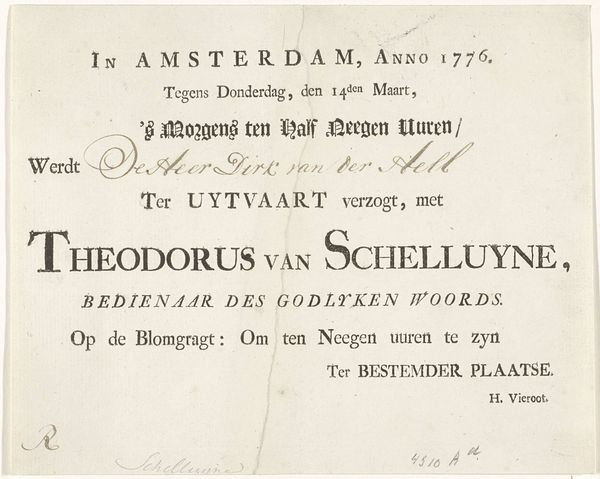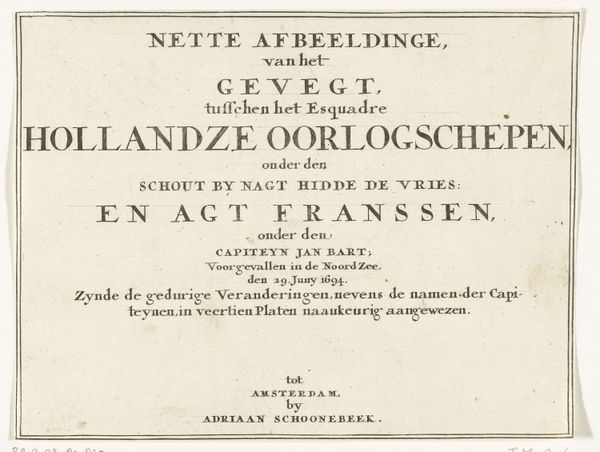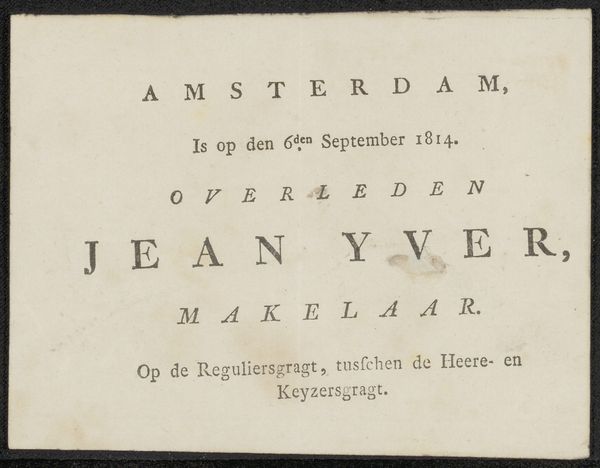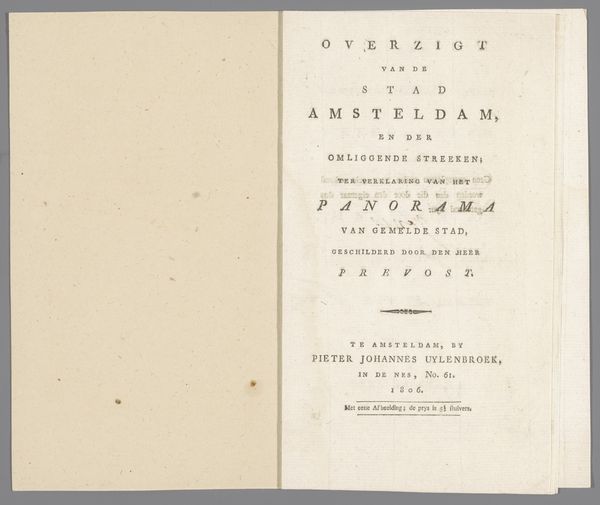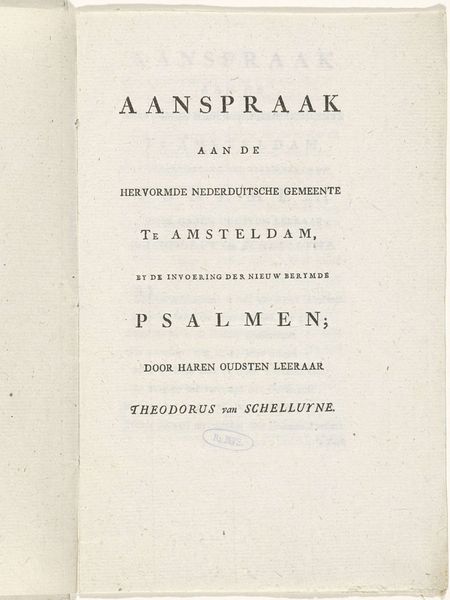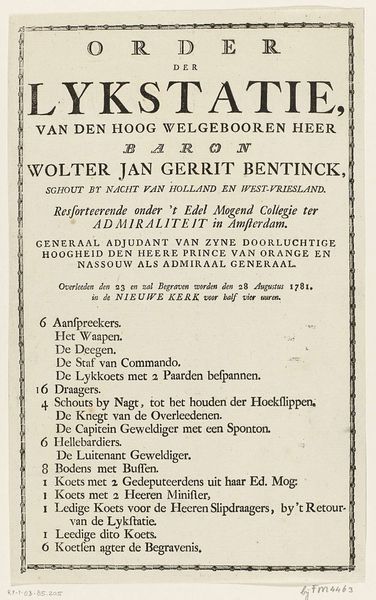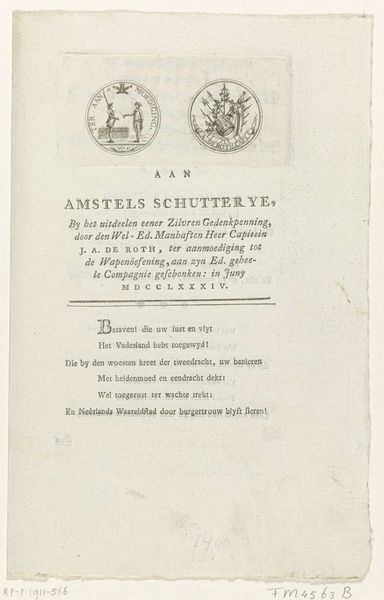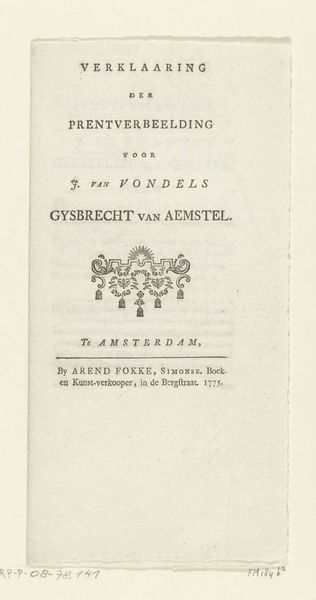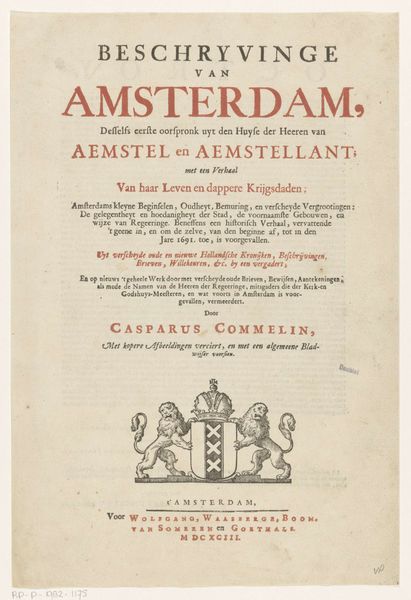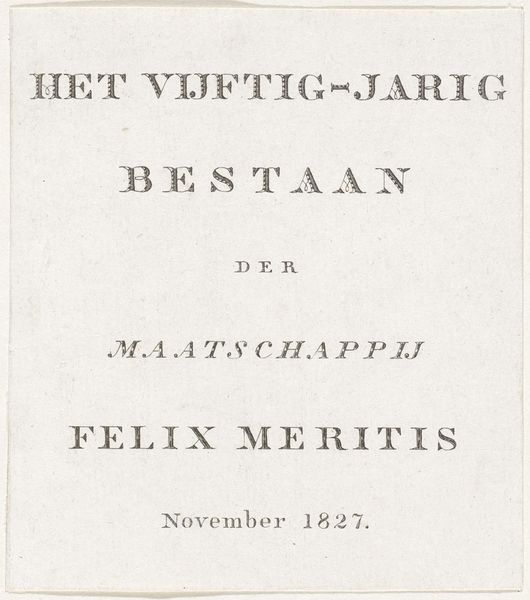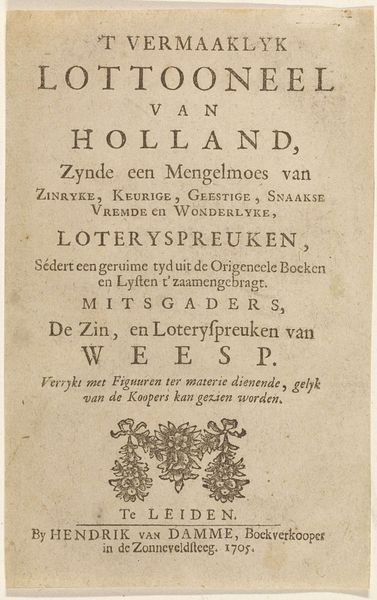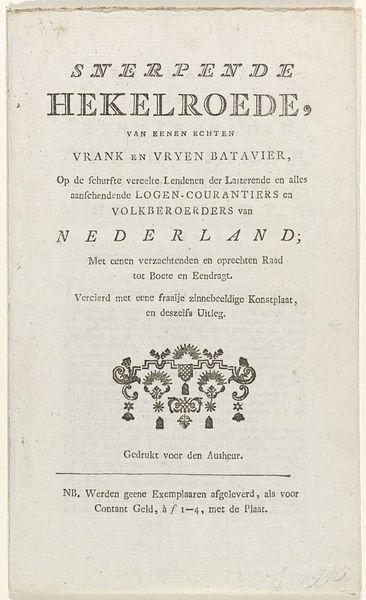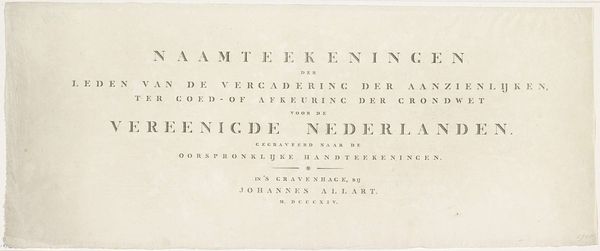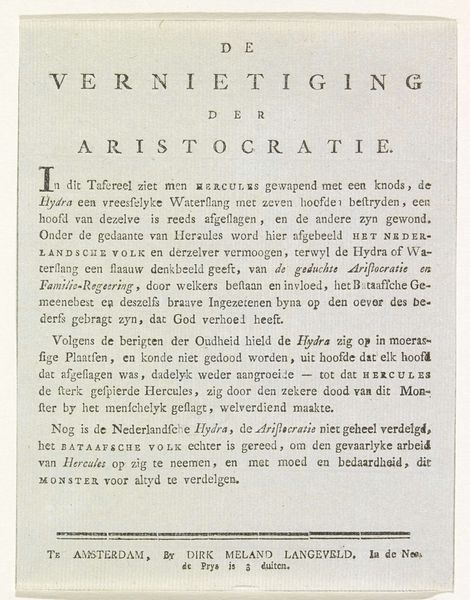
print, paper, engraving
#
aged paper
#
parchment
# print
#
old engraving style
#
hand drawn type
#
paper
#
hand-written
#
fading type
#
thick font
#
history-painting
#
handwritten font
#
golden font
#
engraving
#
historical font
Dimensions: height 97 mm, width 130 mm
Copyright: Rijks Museum: Open Domain
Curator: This intriguing print, dating from around 1800 to 1811, is a death announcement for Lucas van Steveninck Anthsz. It's engraved on paper, in a classic, formal style for the time. Editor: There’s a simple beauty to it. A stark, aged paper with text that feels… resolute, even. It speaks of a time where death was more present in daily life, handled with a certain directness we lack. Does the style influence our modern emotional reception? Curator: Undoubtedly. The historical context is vital. This announcement wasn't a private affair but a public notice. The style echoes similar societal imprints; in typography and textual composition which shaped public understanding of life events like death. Editor: It's like a snapshot of Amsterdam, circa 1800, viewed through the lens of someone's passing. Lucas van Steveninck, the medicine doctor... Wonder what his practice was like. The brief glimpse we get into this one man and his time through those words, that single document printed onto simple aged paper… That to me is astounding. Curator: Exactly. Van Steveninck's profession provides insight. Doctors then held a different social position than they do today, viewed in the then cultural and professional circumstances. Printing and distributing notices of their deaths were common occurrences. The simple act reinforced social status, networks and civic engagement and mortality, reminding contemporaries of their interconnectedness. Editor: I suppose it highlights how art, in this case, print, can subtly enforce cultural structures. I find that a fascinating contrast: something so straightforward on the surface holding this complex social mechanism within it. The aging quality in itself provides a sense of reflection. Curator: Yes, what's really fascinating is to think about the impact of such print medium and public notice, in informing, or perhaps gently steering society’s behaviors. A humble memento. Editor: And it now quietly informs us. Death made beautiful. Curator: Indeed. Food for thought and reflection on the societal mechanisms of 18th century public and private life in Amsterdam. Editor: For me too. A beautiful epitaph, perfectly rendered.
Comments
No comments
Be the first to comment and join the conversation on the ultimate creative platform.
